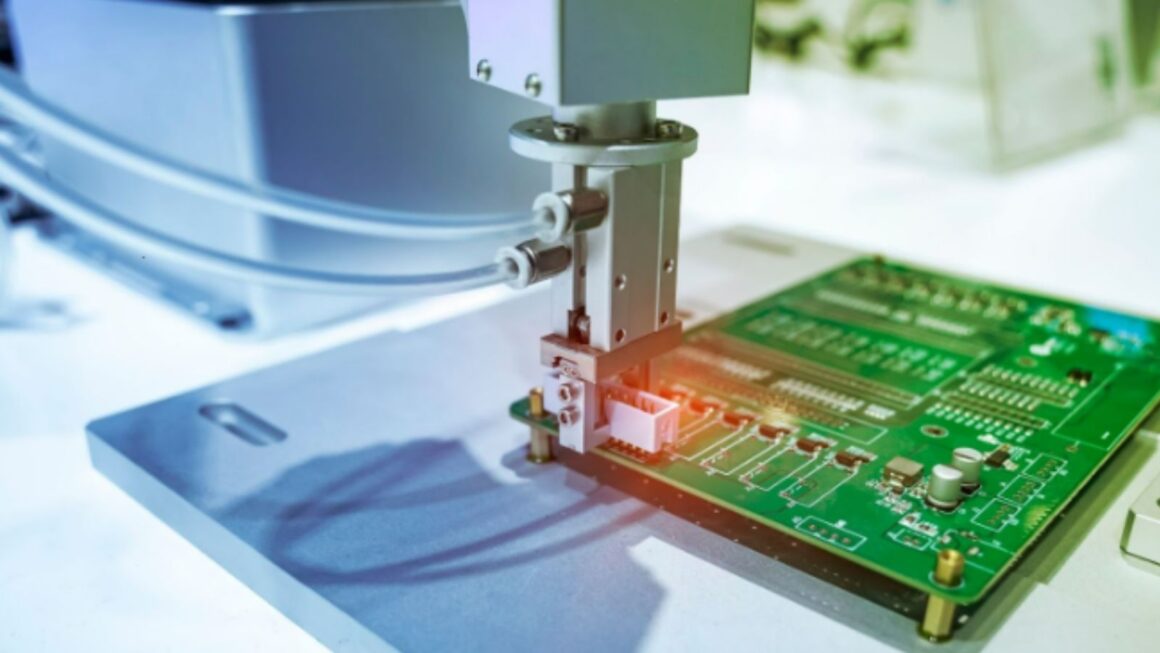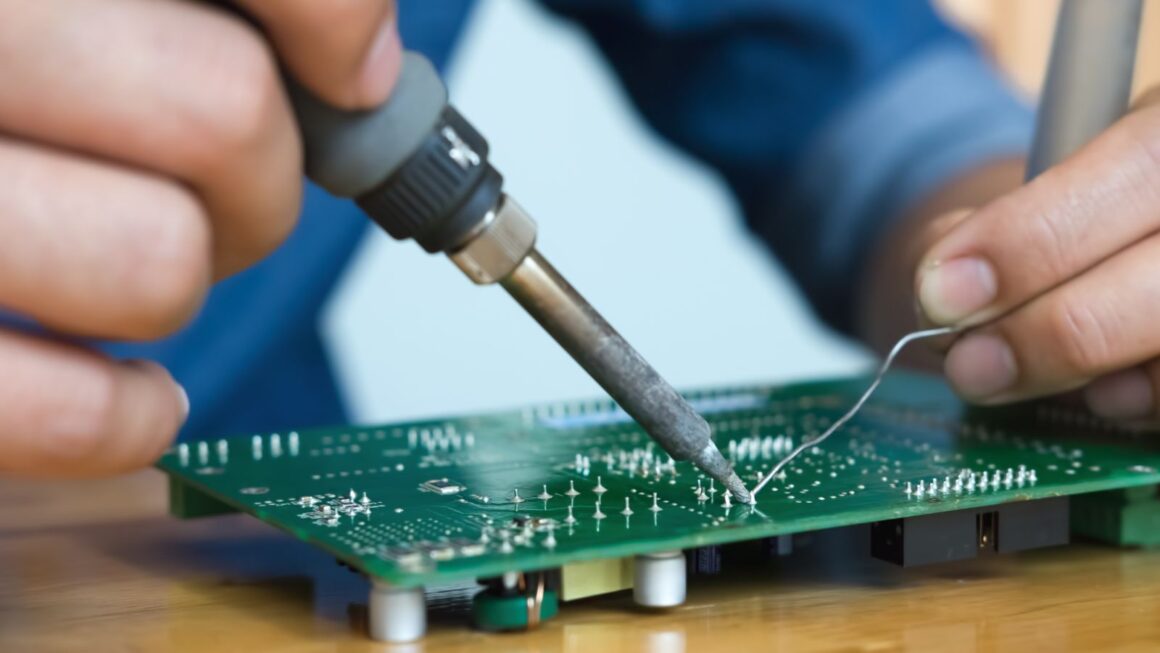The landscape of PCB manufacturing technology is rapidly evolving, with every pcb board manufacturer striving to meet the growing demand for faster, more efficient, and cost-effective solutions. Innovations like advanced materials, automation, and precision testing are reshaping how printed circuit boards are designed and produced. Understanding these trends is crucial for industries ranging from telecommunications to medical devices, as they directly impact product performance and reliability.
Overview of PCB Manufacturing Technology
PCB manufacturing technology experiences rapid advancements driven by demands for speed, efficiency, and reduced costs. Key developments include sustainability-focused designs, integration of IoT, high-density interconnect (HDI) solutions, and high power board adaptations. Each trend addresses specific industry needs while enhancing PCB performance and reliability.
Sustainability in PCB Design
Manufacturers increasingly prioritize environmentally friendly PCBs. Materials like the flax-fibre-based composite in Soluboard reduce e-waste by promoting water-soluble alternatives. This shift reflects a growing awareness of environmental impact across multiple industries.
Impact of IoT on PCB Manufacturing
The rise of IoT devices necessitates the production of smaller and more powerful PCBs. Innovations such as flexible PCBs allow for twisting and bending, accommodating various device casings while maintaining performance. This adaptability addresses the evolving consumer demand for compact and multifunctional technology.
High-Density Interconnect (HDI)
HDI technology enhances wiring density, enabling finer trace widths and optimized routing options. This advancement not only lowers production costs but also increases functionality in compact spaces. The result is a more efficient use of materials and enhanced electrical performance.
High Power Boards
Growing applications in electric vehicles and solar panels drive demand for high power boards. PCBs rated for 48V and higher accommodate increased electrical loads, ensuring reliability in power-critical environments. This trend underscores the shift towards renewable energy and electric mobility.
Advanced Testing and Quality Assurance
Manufacturers employ rigorous testing standards, including Automated Optical Inspection (AOI), X-ray inspection, and In-Circuit Testing (ICT). These methods ensure defect detection and verify PCB functionality throughout the production process. Adopting these quality assurance practices enhances product integrity and durability.
Overall, these trends represent significant strides in PCB manufacturing, aligning with industry expectations and enhancing overall product performance.
Advancements in Materials
Innovations in materials are essential in the evolution of PCB manufacturing technology. These advancements improve performance and address the needs of modern applications.
Flexible PCBs
Flexible PCBs are increasingly adopted due to their advantages. They offer a reduction in size and weight, enabling more compact designs. Flexibility reduces the risk of damage during assembly and handling. Applications range from wearable devices to smartphones, where space optimization is crucial. Their adaptability also allows for integration into complex shapes and structures.
High-Frequency Materials
High-frequency materials are critical for applications requiring fast signal transmission. Cutting-edge materials such as Teflon and Rogers 4000 exhibit superior dielectric properties. These materials improve signal integrity and minimize signal loss, especially at elevated frequencies. The integration of these materials with manufacturing technologies aids in developing PCBs that support high-speed communication and reliable performance in telecommunications and aerospace sectors.
Automation and Robotics in PCB Manufacturing
Automation and robotics are crucial in modern PCB manufacturing, enhancing efficiency, precision, and productivity.

These technologies significantly transform production processes and drive advancements across the industry.
Benefits of Automation
Automation improves production speed without compromising quality. It employs advanced machinery and programming, which streamline workflows, reduce human error, and optimize resource allocation. Recent studies indicate that automated systems can increase production rates by up to 50% while ensuring consistent output quality. Enhanced testing capabilities, such as in-circuit testing, allow for real-time performance verification, reducing downtime and enhancing the reliability of PCB products.
Robotic Assembly Processes
Robotic assembly processes utilize precision technology to improve PCB assembly accuracy. Robots with machine vision systems can handle increasingly smaller components, resulting in compact and powerful PCBs. These robotic systems facilitate surface mount technology (SMT), placing components directly onto PCB surfaces with high speed and accuracy. This capability leads to better performance and design flexibility, which is essential for applications in telecommunications, automotive, and medical devices. Recent innovations in robotic grippers further improve the ability of these machines to adapt to different PCB designs, fostering innovation in manufacturing capabilities.
Innovations in PCB Design Software
Design software for PCBs has undergone significant advancements, enhancing efficiency and precision in the manufacturing process. Modern tools focus on user-friendly interfaces, allowing engineers to streamline designs while incorporating complex functionalities.
Integrated Simulation Features
Integrated simulation tools enable real-time analysis of thermal and electrical performance before physical prototyping. These features reduce errors and minimize costly redesigns.
Collaboration Tools
Collaboration tools within PCB design software facilitate teamwork among engineers and stakeholders. Data sharing in real-time enhances communication, improving project timelines and outcomes.
Automated Design Checks
Automated design rule checks (DRC) help identify potential issues early in the design phase. This automation reduces the time spent on manual inspections and ensures compliance with industry standards.
Cloud-Based Solutions
Cloud-based design platforms provide flexible access to PCB design software from anywhere. This capability supports remote collaboration, allowing teams to work simultaneously on designs and updates.
Advanced Routing Algorithms
Advanced routing algorithms optimize layouts by minimizing traces and maximizing space. These algorithms improve signal integrity and reduce the overall size of PCBs, accommodating high-density interconnections.
3D Visualization Tools
3D visualization tools offer perspectives of completed designs, enabling users to identify potential mechanical conflicts early. They support the creation of compact and effective designs for various applications.
AI and Machine Learning Integration
The integration of AI and machine learning in PCB design software enhances decision-making processes. These technologies predict design challenges and suggest improvements based on historical data.

Innovations in PCB design software significantly impact the manufacture of circuit boards, improving efficiency, reducing costs, and promoting high-quality outputs.
Conclusion
The landscape of PCB manufacturing is undergoing significant transformation. As technology advances, manufacturers are embracing innovations that improve efficiency and sustainability. The focus on high-density interconnects and eco-friendly materials reflects a commitment to meeting industry demands while minimizing environmental impact.
Additionally, the integration of advanced design software and AI-driven tools is revolutionizing how PCBs are developed and tested. This shift not only streamlines production but also ensures higher quality and performance. As these trends continue to evolve, they promise to shape the future of electronics, making PCB manufacturing more efficient and environmentally responsible.

